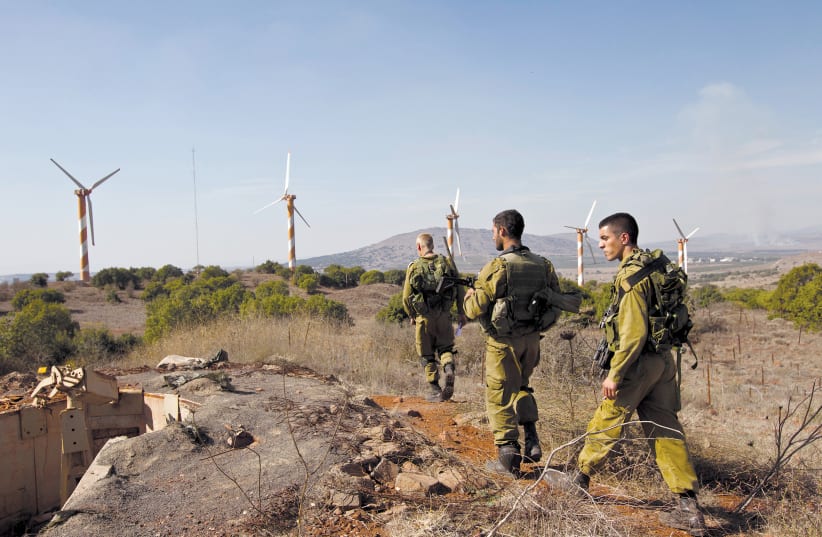The world is being deceived into believing that fossil fuel can be phased out, and that this would provide a greener environment. Well, I have my doubts, so let us examine the facts.
The best example is California, which has legislated to end the sale of gasoline-driven cars in 2026 so that by 2035 only electric cars will be on the roads. Sounds good, doesn’t it? On the surface, yes; but when one looks at the implications, the hoax soon becomes apparent.
The general idea is that there will be no more mining of expendable minerals that will harm our environment.
But the main constituents of electric car batteries are lithium, cobalt and nickel. They are minerals that are obtained by mining. The battery of a Tesla Model S, for example, uses around 12 kg. of lithium. Not to mention the world’s mobile electronic devices like laptops and telephones.
Today, there are more than 14 million cars registered in California. Even if this number would not increase by 2035 and they were all electric, imagine the number of batteries that would be required. What happens to them at the end of their useful life? Will the residue go back into the ground and pollute the water tables? And where does the power for the mining of the minerals come from? The countries with the major deposits of lithium are Chile, Argentina, Australia and China. Most have struggled with political dysfunction and financial crises, and their regimes are unpredictable and could withhold supplies if they considered it politically expedient.
It is interesting that the movement for environmental protection is selective in its application. To those who shout loudest for the phasing out of fossil fuels, it does not seem to matter to that electricity production in China relies 65% on coal and is still constructing new mines, Argentina’s energy derives 60% from fossil fuels, and that Chile’s renewable energy amounts to just 11.4%. Here I quote the words of Israel’s Environmental Protection Minister Tamar Zandberg: “In order to minimize the percentage of greenhouse gases in the atmosphere and prevent the continuation of global warming, we must make sure that we’re not harming nature.... A solution that is meant to solve one problem by creating other problems is not a real solution.”
“In order to minimize the percentage of greenhouse gases in the atmosphere and prevent the continuation of global warming, we must make sure that we’re not harming nature.... A solution that is meant to solve one problem by creating other problems is not a real solution.”
Israeli Environmental Protection Minister Tamar Zandberg
So how can we solve this problem?
One renewable source of energy are wind turbines. You’ve seen pictures of them scattered about the landscape. Those tall towers with large propellers. Most onshore wind turbines in the US have a capacity of up to 2,75 MW (mega watt). That sounds good until you realize that according to the US Energy Information Administration, the average household in the United States uses about 9,600 kilowatt-hours per year.
Just imagine how many of these monstrosities are needed to service just one town, and their output depends only on the wind.
Without the wind, it is like a bicycle that nobody rides – it is available but not spinning. Of course, to be realistic, wind turbines are not the only source of renewable energy. There is also solar and nuclear.
A key challenge facing the wind industry is the experience that turbines adversely affect wild animals both directly, via collisions, and indirectly due to noise pollution, habitat loss, and reduced survival or reproduction. Among the most impacted wildlife are birds and bats, which by eating destructive insects provide billions of dollars of economic benefits to the country’s agriculture.
Currently, Israel has about 50 operating wind turbines, mainly in the Golan Heights and the Jezreel Valley area in the North. The National Infrastructure Council has given the green light for the erection of seven new mega wind turbines that will tower over the Golan at the height of around 200 meters, even taller than Tel Aviv’s cylindrical Azrieli Towers. The energy production of these individual solar or wind plants are localized time and weather-dependent. Is their construction in the Golan sensible when, in the current political climate, they would be an easy target for the enemy?
In Israel, the advantages of wind power are relatively negligible compared to the potential for harm to nature, which is high. And here I repeat the words of Tamar Zandberg: “A solution that is meant to solve one problem by creating other problems is not a real solution.”
As part of God’s creation, the sun is the source of all life. The amount of sunlight that strikes the Earth’s surface in an hour and a half is enough to handle the entire world’s energy consumption for a full year. There are several methods to harness this renewable source of energy.
In Israel, it is usual for most homes to install a solar-heated water system on the roof, consisting of a solar panel and a water tank. As hot water is drawn from the top of the tank, cold water flows in from the bottom. One can also cover the roof of the house with panels that will convert the sunlight into electricity to run the house. Any surplus can be fed into the national grid and produce financial credit.
Very simply explained, to use solar energy commercially, large areas covered with solar panels are needed to cover the landscape. They absorb the sun’s energy and automatically beam it to a central point of a tower, where the conversion process takes place. Here, too, the blight on the landscape to satisfy national demand would far exceed tolerable levels.
Then there is nuclear power, which opponents call an accident waiting to happen or, as its supporters claim, is the solution to clean renewable energy.
And that brings me back to the example of California and its administration’s naïve ideals.
Their last nuclear plant, which was scheduled to fully shut down by 2025, has been given renewed life for another five years after the governor warned that the state could face rolling blackouts if its twin reactors were retired too soon.
So, has California bitten off more than it can chew? How will it satisfy the increased demand for electricity?
Most electric car drivers will want to plug in their batteries at the end of the day, to be ready for the next day’s activities.
That, in addition to the usual domestic and industrial demand on the electricity grid during the evening hours. The load on the grid would be unimaginable, and so would the consequences.
For their largest part of in-state electricity generation, California relies on natural gas. They already import 95% of their requirements via interstate pipelines from the Southwest, the Rocky Mountains, and Canada. The increased financial burden of their program would be incalculable. But there’s more! By implementing their carbon-free solution, they are creating a near economic disaster. Just think of the implications. All gas stations would have to close. Many thousands of their employees would be added to the unemployment figures. To compensate for the loss of gas tax revenue, electricity tax would surely have to be increased, an additional burden on the poor and the non-car owners.
Then there are the millions who rely on their older cars and cannot afford to lose them and purchase new electric vehicles, which are far more expensive than gas-fueled cars.
Think of the many owner-drivers of taxi cabs, to mention just some effects of the green revolution. I’m sure you can think of several more.
To what extent should Israel be required to take part in the effort to halt global warming and save the environment?
The Georgetown Journal of International Affairs describes Israel’s discovery of natural gas fields in Israel’s Eastern Mediterranean offshore areas as having “moderated the country’s total dependence on energy imports. Israel’s crude oil production is minuscule, and there are no known coal reserves. Oil demand in Israel, especially in the transportation sector, is met by imports, which makes it vulnerable to the vagaries of global oil supply. Crude oil constitutes about 50 percent of Israel’s total oil imports. Natural gas, however, has provided a potential solution to Israel’s energy security concerns. It has become the “fuel of choice” in electricity generation and has crowded out coal as the dominant energy source.”
The Israel Electric Corporation (IEC) builds, owns, maintains, and operates power generation stations and sub-stations, as well as transmission and distribution networks. Currently, it has 15 power stations with 52 generating units:16 are steam-driven, 25 are gas turbines, and 11 are combined-cycle units.
Steam-driven turbines require the burning of a fuel such as coal, petroleum fuel oil, or combustible waste. Gas turbines heat a mixture of air and gas at very high temperatures, causing the turbine blades to spin. The spinning turbine drives a generator that converts the energy into electricity.
There are, of course, several types of gas turbines. The most efficient is the combined-cycle power system, which uses a gas turbine to drive an electrical generator and recovers waste heat from the turbine’s exhaust to generate steam. The steam is then fed into a steam turbine to provide additional electricity. Israel also has three independent power stations, all run on gas.
Apart from providing vital energy security, Israel hopes that its offshore gas resources can serve as a diplomatic tool to improve relations with its Arab neighbors, that shared economic benefits through gas trade will promote cooperation with regional countries and mitigate conflicts that have long informed the political landscape of the region.
I believe that Israel is about to prepare a master plan for 2050, which will serve as a basis for planning the economy. The purpose is to examine, from a broad and long-term perspective, the entire range of considerations and to determine Israel’s energy policy, including the mix of energy sources, in line with its international commitments, in particular the Paris Agreement to reduce greenhouse gas emissions and limit the global temperature increase to below 2 degrees Celsius (3.6 F) above pre-industrial levels by the year 2100.
But in the medium term, there is no need for little Israel to commit to the large investment needed to phase out the use of fossil fuels, to convert the complete transportation sector to electric power, and put a large burden of taxation on the population. Our percentage of air pollution is minuscule compared to that of China, a country that is 437 time larger than Israel and is at this moment constructing new coal mines.
Russia is 779 times the size of Israel and is supplying its satellites with oil. Even Biden’s United States is still mining some coal.
Because Israel’s impact on a “greener” world would be extremely small, our country is justified in waiting for the superpowers to lead the way. ■
Walter Bingham, who is 98, holds two Guinness World Records as the oldest working journalist and radio broadcaster in the world.

